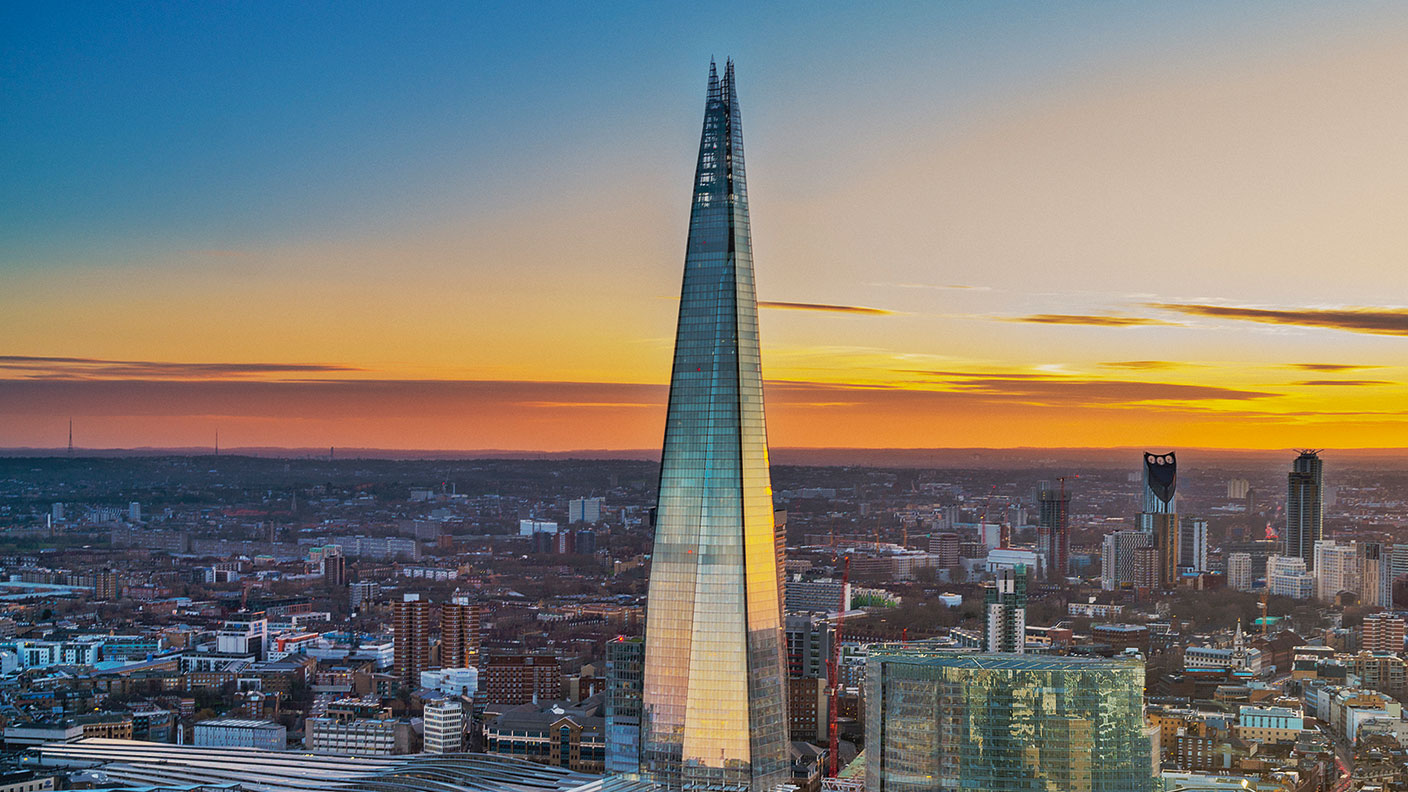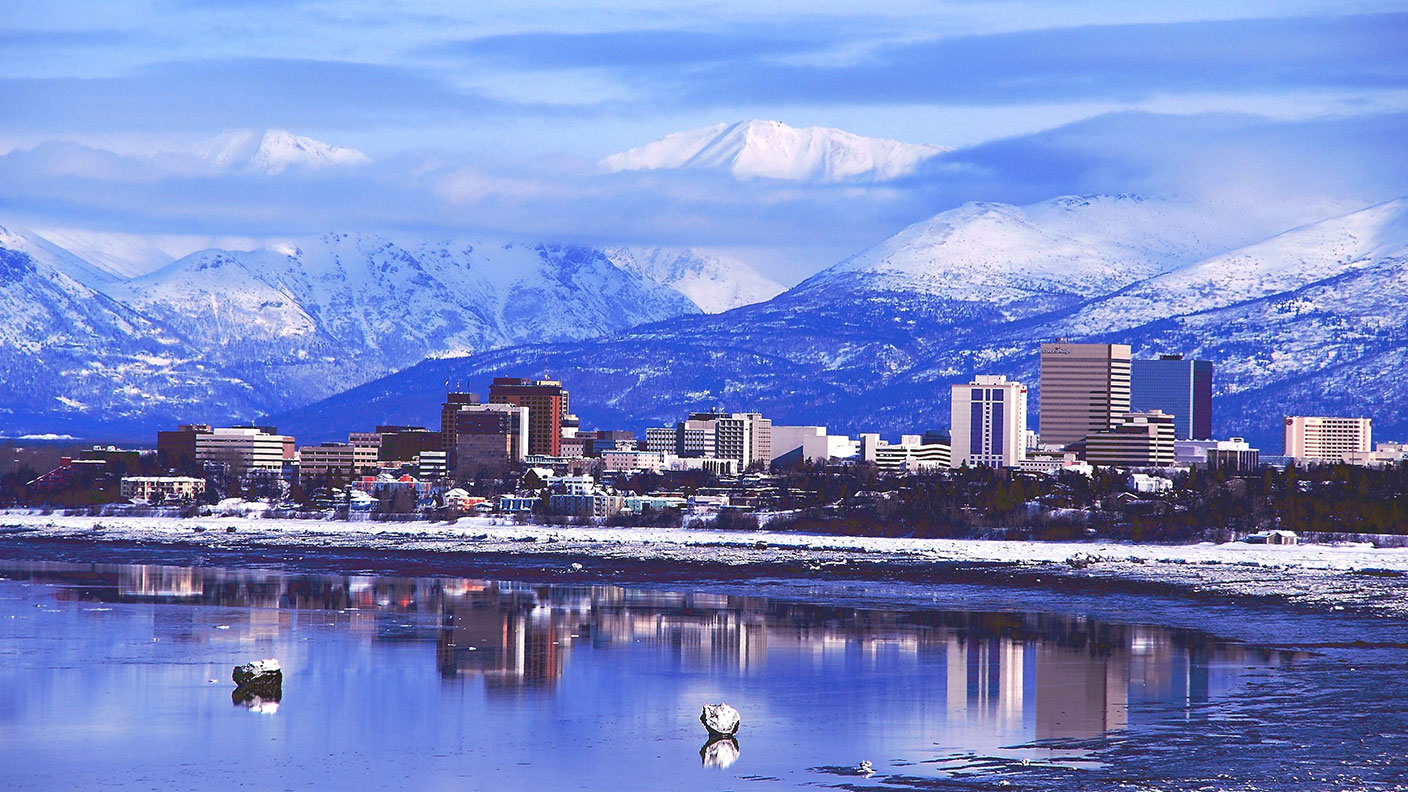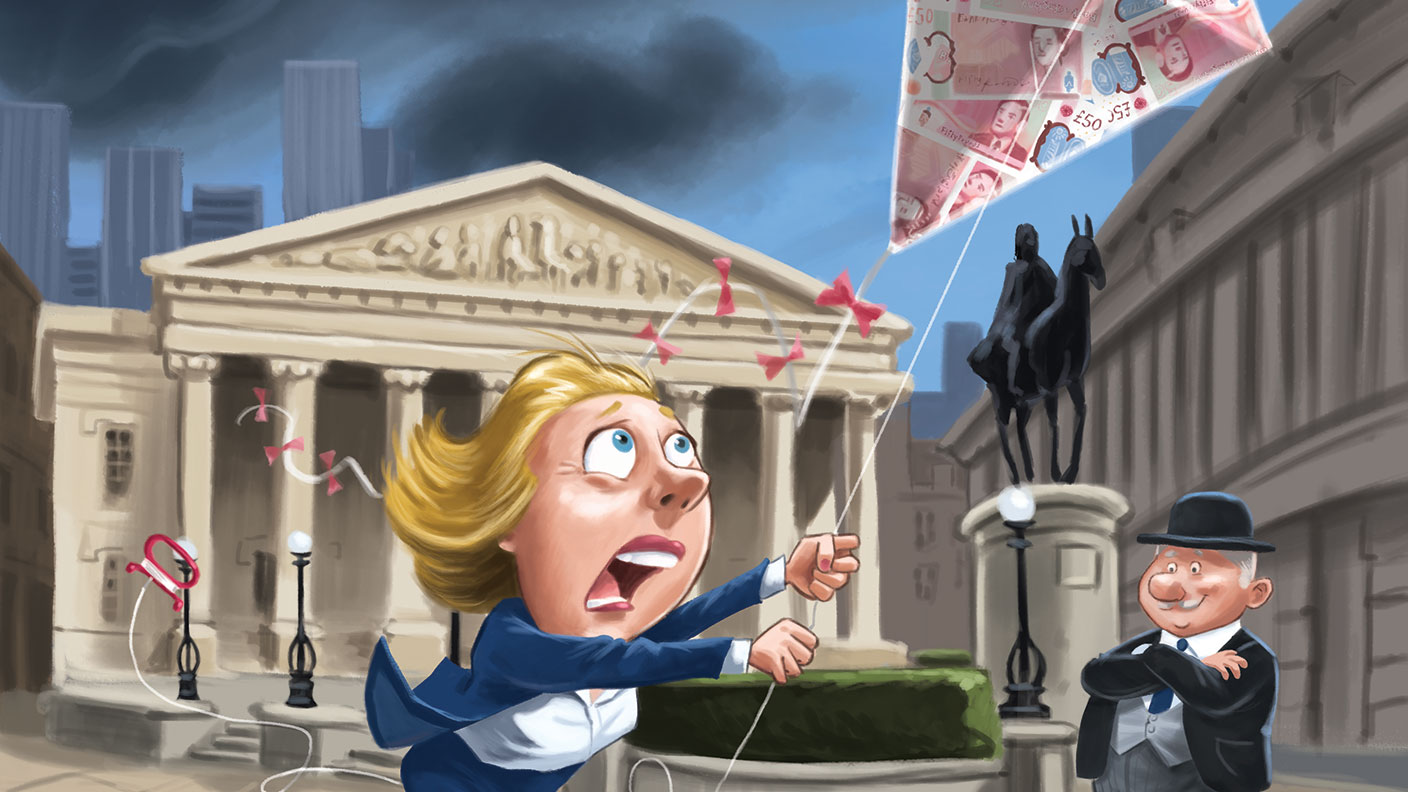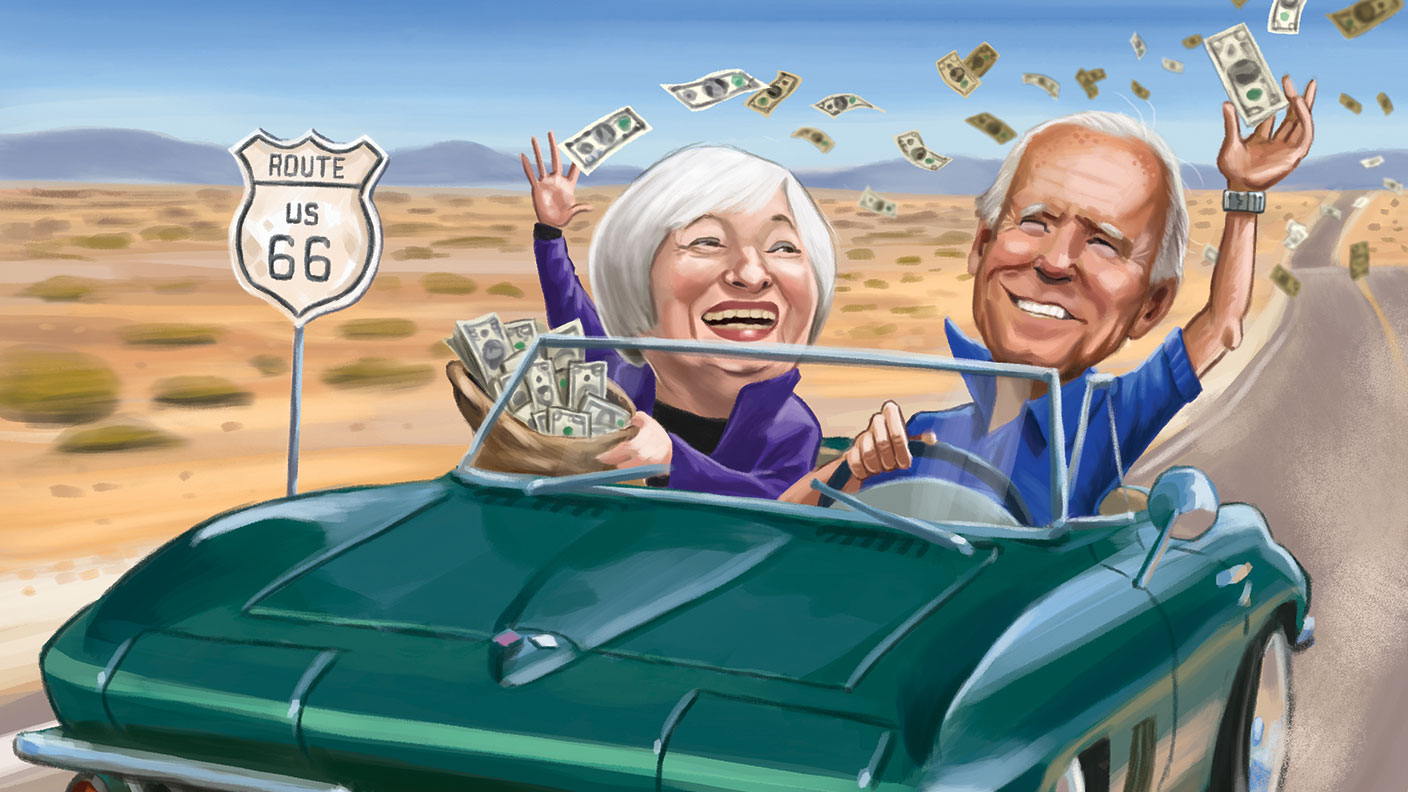Buy into booming India
There’s still work to do, but India’s new prime minister is paving the way for growth. Smart investors should buy in now, says Matthew Partridge.


There's still work to do, but India's new prime minister is paving the wayfor growth. Smart investors should buy in now, says Matthew Partridge.
In 2001, economist Jim O'Neill then working at Goldman Sachs predicted that four emerging economies would dominate the 21st century: Brazil, Russia, India and China the infamous Bric countries. More than a decade on, the verdict is far from settled.
As Craig Mellow notes in Barron's, "Brazil and Russia are rallying around leaders who are moving resolutely in the wrong direction, as far as world markets are concerned, while China sends mixed, opaque signals about its own promised reforms".
MoneyWeek
Subscribe to MoneyWeek today and get your first six magazine issues absolutely FREE

Sign up to Money Morning
Don't miss the latest investment and personal finances news, market analysis, plus money-saving tips with our free twice-daily newsletter
Don't miss the latest investment and personal finances news, market analysis, plus money-saving tips with our free twice-daily newsletter
Russia's market is imploding, Brazil looks fragile, and while China is rallying and looking attractive in many ways, it's from a very low base.
There's one notable exception. "India looks by far and away the best story" in emerging markets, as Polar Capital's William Calvert tells the Financial Times. The main stockmarket index, the Sensex, has soared by around 30% this year, far outstripping its Bric rivals. It's largely down to one man Narendra Modi.
Modi was elected prime minister in May this year, leading the Bharatiya Janata Party (BJP) to the first outright general-election victory for 30 years. Modi is a pro-private-sector politician in a country where rampant bureaucracy and state intervention are par for the course.
He wants to make India a more dynamic economy and his track record proves he's serious. He governed the state of Gujarat for 13 years before becoming prime minister, and is credited with turning it into one of the most successful states in India.
Hopes that Modi might replicate this success at a national level are behind the surge in the market this year. Falling oil prices have already allowed him to make the bold gesture of phasing out fuel subsidies that cost India $10bn a year.
It's a promising start improving the country's public finances at a time when the US Federal Reserve is ending its quantitative-easing programme is key to maintaining investor confidence in India.
But it'll take a lot more to make a lasting transformation. India is now the world's third-largest economy in purchasing-power parity terms it overtook Japan last year. But when you take its huge population into account, India is still very poor.
The International Monetary Fund (IMF) reckons it is on a par with Nigeria in terms of income per head. Yes, Nigeria may be one of the wealthier African countries, but the point stands India is still very much an emerging economy. If current growth figures are anything to go by, this is unlikely to change soon.
In theory, emerging nations should grow more quickly than developed ones they have greater potential to play catch-up by adopting modern technology and leapfrogging' development stages that more advanced economies have had to trudge through.
However, while India experienced growth rates of around 10% a year in brief bursts between 2004 and 2011, this has fallen to around 5% in the past few years.
Shilan Shah of Capital Economics reckons India's long-term growth rate could easily stay at this level if nothing changes. That is far below India's potential growth and would mean hundreds of millions of people being condemned to poverty for decades.
So what does Modi need to do? India is held back by three main problems. Firstly, there are too many state-run enterprises, which means that inefficiency and bureaucracy are entrenched. Secondly, labour laws are antiquated, holding firms back from expanding and making full use of India's vast potential workforce.
Finally, the country's existing infrastructure simply cannot support its potential growth. Modi's reforms aim to tackle all three problems and here's how.
Shock therapy
After India gained independence in 1947, its first prime minister, Jawaharlal Nehru, took a neutral stance during the Cold War, so that India was able to court aid from both the Soviet Union and the West.
However, as a result many of the new government's advisers were big supporters of state ownership. While India grudgingly allowed a private sector to exist, a lot of investment was carried out via large state-run firms, magnets for inefficiency and corruption.
Then, in 1991, a fiscal crisis forced India to seek aid from the International Monetary Fund (IMF). In return, the IMF demanded New Delhi start privatising state firms.
But rather than quickly shift firms to the private sector (as in eastern Europe and Latin America), India moved more slowly it claimed that too much shock therapy' would lead to private monopolies, rising unemployment, and falling tax revenues.
This hesitancy only made it easier for civil servants and trade unions to hold up the process, aided by India's fractious political system it's been common in recent years for the central government to talk a big game on privatisation and to set ambitious targets, only to quietly shelve them later.
Depending on how you define it, between 200 and 250 public-sector firms and banks are majority-owned by either central or local governments. While some are the sort of companies you might expect to be state-owned, such as road or telephone companies, most operate in commercial sectors, such as engineering and mining.
In all, the public sector and state firms still account for two-thirds of salaried jobs (although most Indians are self-employed, as we'll see shortly).
How does Modi plan to succeed where others have failed? His government is pushing two main reforms. Firstly, it wants private shareholders to have a minimum 25% stake in all Public Sector Undertakings'.
The hope is that external shareholders will pressurise management and introduce some private-sector discipline. Then, in the medium term, the aim is to move more of these corporations entirely into the private sector.
The new finance minister, Arun Jaitley, is particularly keen to get loss-making companies off the state's hands and into the private sector where they can stand or fall on their own.
Reforming labour laws
As mentioned already, most Indian workers are self-employed. That's not due to a surfeit of entrepreneurial zeal it's mainly down to India's outdated labour laws. These are rooted in the best intentions.
A key factor in the drive for Indian independence was brutal treatment of striking workers one railway strike in the 1920s ended in the death or arrest of scores of workers, as well as a temporary ban on the transport workers' trade union.
As a result, India's constitution gives significant protection to workers. The trouble is, the laws are so strict that they are counterproductive.
For example, any company with more than 100 employees has to get government permission to make staff redundant. Of course, the government doesn't tend to grant permission because that's not how you win votes.
So companies have no desire to grow beyond a certain point or to hire permanent staff, which is why most private-sector workers are self-employed. This prevents companies from taking advantage of the economies of scale that should be possible with India's 1.6 billion population.
It also means the large organisations that do exist are very inefficient jokes about the work-shy habits of Indian civil servants are legion. In short, India's labour market is "inefficient and rigid", as the World Economic Forum puts it.
Another problem is the factory-inspection regime. Safety is a critical issue in both developed and emerging nations. But rather than prevent deaths, India's large network of official factory inspectors is known for capricious inconsistency, and generating huge amounts of red tape.
This has held back India's manufacturing sector at a time when rising wages in China and other east Asian countries should be making it a far more attractive location for heavy industry.
Modi's government is addressing this, firstly by changing laws at a national level. Safety inspectors now have to state the reasons for inspections, to deliver their reports in a timely manner and to explain their decisions. The government also plans to make it easier to hire apprentices.
And where the central government can't change laws outright, it is trying to shift responsibility for setting and enforcing rules to state governments (many of which are not run by Modi's party). The hope is that competition between the states will force them to push through more business-friendly rules.
Getting India moving
As well as all this red tape, physical bottlenecks are a major issue. India's infrastructure issues are simple: it needs more of it, and it needs to be more reliable. Many people still don't have access to electricity. Those who do have to rely on private generators as a back-up to the unreliable power grids, which suffer frequent blackouts.
Meanwhile, much of the road network remains unpaved, with only a handful of highways able to operate in all weather conditions. Demand for freight rail and port capacity far outstrips supply.
To remedy this, Modi's government is again pursuing a two-pronged strategy. It plans to build huge amounts of basic infrastructure, such as paved roads and power lines, to bring the whole of India to a minimum standard, with the majority of the budget devoted to improving roads.
Meanwhile, Modi hopes to bring modern high-tech infrastructure to key areas for example, by using bullet trains to link the cities of Mumbai, Delhi, Kolkata and Chennai. These four alone have a combined metropolitan population of just under 70 million.
This summer saw successful trials of a faster rail service on the Delhi-Agra line, and the full service is set to begin later this month. The government is also working with technology companies, such as Facebook, to expand access to high-speed broadband.
Of course, infrastructure costs money. India hopes foreign investors will fund the initial capital spending, in return for concessions, such as the right to operate rail lines. The Japanese government has already offered to help with its own substantial expertise with high-speed rail, while China has pledged to invest $300bn over the next years to 2017.
Is it too expensive?
This is all very positive. Developed-world investors often underrate the importance of good governance, partly because it often doesn't seem to make much difference which party is in charge of their own country.
But it's critical in emerging markets, as the diverse fortunes of the Brics demonstrate. So even although reform won't be easy, it's good news that Modi has lots of support, and is generally going in the right direction.
Of course, you might worry that share prices reflect this. Judged on one of our favourite ratios the cyclically adjusted price/earnings (Cape) ratio, which measures a share price against its average ten-year earnings the Indian market Cape was around 20 at the end of June, and has gone up since. This would make it one of the more expensive markets, especially compared to China.
However, India is still cheaper than the US market, on a Cape of 26. Also, India's Cape (similarly to Japan's) has historically been high compared to most markets.
The profitability of the firms in the index is also dragged down by the large number of badly run state corporations. If Modi's reforms move them into the private sector, or at least force them to operate in a more efficient manner, company earnings could rise quickly.
So in this instance, the forward p/e ratio may be a better guide. And at the moment the Sensex is trading at around 15 times 2015 earnings, just above the FTSE 100's 13 times hardly bargain-basement levels, but not bubble levels either.
We look at some of the best ways to play India, both through funds and through individual stocksbelow.
The investments to buy now
The easiest way for UK investors to buy Indian stocks is via a fund.A number of investment trusts invest purely in India. Two of thebest known are the JPMorgan India (LSE: JII) and Aberdeen'sNew India (LSE: NII).
They have both performed roughly in linewith one another over the past year, but Aberdeen soundlybeats the JPMorgan trust over three and five years (a 75% netasset value gain versus 53%).
The total expense ratio (TER) oneach is around 1.5%. The JPMorgan trust trades on a slightlyhigher discount of around 12%, compared to 9% for Aberdeen,but given the consistent outperformance of the latter, we'd optfor the Aberdeen trust.
A perhaps more intriguing if riskier option is Ocean Dial'sIndia Capital Growth Fund (LSE: IGC). This trust is focused onsmall and medium-sized Indian companies in sectors such asindustrials, financials and healthcare.
This is a more aggressivebet on the Indian market, and it has shot ahead of both theaforementioned funds over the past 12 months it's up around60%. However, it's also likely to fall harder if things turn sour. That said, the current discount of 18% or so is only very slightlyabove the five-year average of 20%, so there could be moreroom for gains if optimism on India continues.
If you'd rather back stocks, one London-listed infrastructure playto consider is Greenko Group (LSE: GKO), which runs severalthermal, wind and hydroelectric power projects in India.
It isgrowing fast, with capacity doubling in recent years, while grossearnings have gone up by nearly 60%. It still has more than 31new projects under construction. It's on a stratospheric p/e ofover 40, but this is set to fall to 16 in 2015, then below 10 in 2016.
Another infrastructure bet is US-listed car maker Tata (NYSE:TTM). Car sales in India have slumped in the past two yearsdue to slowing growth, but better highways should get moredrivers onto the roads. Tata operates in over 175 countries andgets the majority of its revenue from its Jaguar and Land Roversubsidiary, so it's not purely focused on India.
But around 25%of its revenue comes from its domestic sales, and this shouldgrow in the future, as the company has committed to launchingtwo new products a year. Tata looks good value, on a p/e of nine.
One victim of bureaucracy has been miner Sesa Sterlite (NYSE:SSLT), whose profits have been hit by a government decisionto revoke a key licence, forcing it to put a planned aluminiummine on hold. With a more business-friendly government inoffice, there is a good chance that the project will not only goahead, but that others will also be approved.
For now it tradeson a p/e of 11.4, almost exactly book value just be aware thatcommodity prices could well have further to fall.
One firm that could benefit from more flexible labour laws,as well as better technological infrastructure, is WNS Limited(NYSE: WNS).
WNS specialises in business process outsourcing,running back and middle-office operations for some of theworld's biggest firms. It trades on a 2015 p/e of 13.2.
Wipro(NYSE: WIT) is another Indian company that has prospered byselling the services of its workforce (80% of whom are located inIndia) around the world. Its main speciality is in IT services andconsulting, although it also has a business process outsourcingsegment. It trades on a forward p/e of 15.9.
Rising growth would also be good for India's financial sector.A growing middle class means more demand for loans andsavings accounts.
Meanwhile, the shifting of state firms to theprivate sector, and the need for infrastructure financing willcreate more demand for commercial and investment-bankingservices. One bank that is benefiting is ICICI Bank (NYSE: IBN).
The forward p/e of 15.4 looks relatively expensive, but is justifiedby double-digit growth rates and a strong capital base.
Get the latest financial news, insights and expert analysis from our award-winning MoneyWeek team, to help you understand what really matters when it comes to your finances.

-
 Salary sacrifice pensions cap: 3.3 million workers to be hit by contribution limits
Salary sacrifice pensions cap: 3.3 million workers to be hit by contribution limitsThe government has revealed further details of its controversial cap on pension contributions through salary sacrifice. Here is how the changes could affect you
-
 Suffering from home bias? Try Asia and its smaller companies
Suffering from home bias? Try Asia and its smaller companies
-
 Governments will sink in a world drowning in debt
Governments will sink in a world drowning in debtCover Story Rising interest rates and soaring inflation will leave many governments with unsustainable debts. Get set for a wave of sovereign defaults, says Jonathan Compton.
-
 Why Australia’s luck is set to run out
Why Australia’s luck is set to run outCover Story A low-quality election campaign in Australia has produced a government with no clear strategy. That’s bad news in an increasingly difficult geopolitical environment, says Philip Pilkington
-
 Why new technology is the future of the construction industry
Why new technology is the future of the construction industryCover Story The construction industry faces many challenges. New technologies from augmented reality and digitisation to exoskeletons and robotics can help solve them. Matthew Partridge reports.
-
 UBI which was once unthinkable is being rolled out around the world. What's going on?
UBI which was once unthinkable is being rolled out around the world. What's going on?Cover Story Universal basic income, the idea that everyone should be paid a liveable income by the state, no strings attached, was once for the birds. Now it seems it’s on the brink of being rolled out, says Stuart Watkins.
-
 Inflation is here to stay: it’s time to protect your portfolio
Inflation is here to stay: it’s time to protect your portfolioCover Story Unlike in 2008, widespread money printing and government spending are pushing up prices. Central banks can’t raise interest rates because the world can’t afford it, says John Stepek. Here’s what happens next
-
 Will Biden’s stimulus package fuel global inflation – and how can you protect your wealth?
Will Biden’s stimulus package fuel global inflation – and how can you protect your wealth?Cover Story Joe Biden’s latest stimulus package threatens to fuel inflation around the globe. What should investors do?
-
 What the race for the White House means for your money
What the race for the White House means for your moneyCover Story American voters are about to decide whether Donald Trump or Joe Biden will take the oath of office on 20 January. Matthew Partridge explains how various election scenarios could affect your portfolio.
-
 What’s worse: monopoly power or government intervention?
What’s worse: monopoly power or government intervention?Cover Story Politicians of all stripes increasingly agree with Karl Marx on one point – that monopolies are an inevitable consequence of free-market capitalism, and must be broken up. Are they right? Stuart Watkins isn’t so sure.